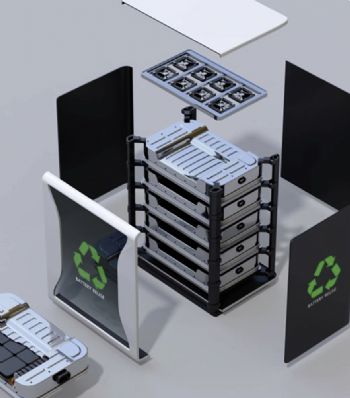
With the rapid development of the electric vehicle (EV) industry in recent years, a large wave of retired power batteries is imminent. Additionally, as the capacity of li-ion batteries increases, the amount of scrap batteries in battery production is also rising fast, making battery recycling a priority for the market.
Interact Analysis’ upcoming report
Li-ion Battery and Manufacturing Equipment provides a deep analysis of the current battery recycling market, and this
Insight explores some of the key themes in the report.
Manufacturers that establish recycling businesses come from across the battery industry chain, including upstream raw mineral and material suppliers, midstream battery manufacturers, vehicle OEMs and businesses specialising in battery recycling.
In China, there are fewer large-scale companies that specialise in lithium battery recycling and currently companies with battery recycling plants tend to be manufacturers from elsewhere in the lithium battery industry chain. In contrast, in other countries the li-ion battery recycling market is dominated by large-scale recycling manufacturers that specialise in recycling businesses, such as Li-cycle. Other companies in the lithium battery industry chain predominantly participate in the battery recycling market through collaboration with recycling companies.
Aside from signing cooperative research agreements, cooperation on battery recycling among companies in the lithium battery industry chain usually takes the form of signing supply agreements. These can be divided into directional supply and establishing a closed-loop recycling ecosystem. Directional supply involves OEMs and battery manufacturers supplying scrap batteries or scrap materials to recycling companies, and recycling companies supplying recycled materials obtained from processing scrap batteries to raw material manufacturers.
Closed-loop recycling ecosystemIn contrast, some companies collaborate with the aim of establishing a closed-loop recycling ecosystem. For example, a collaboration announced by GEM in February 2023 with Mercedes-Benz China, CATL, and Brunp — Mercedes-Benz China’s retired waste batteries will be processed by GEM and Brunp, with the recycled key raw materials such as nickel, cobalt, manganese, and lithium supplied to CATL’s supply chain and used to produce new batteries for Mercedes-Benz. The cooperation in battery recycling between upstream and downstream companies in the lithium battery industry chain not only meets environmental protection requirements but also maximises battery value and reduces battery production costs.
Some companies whose main operations are not directly related to batteries are also exploring the market for battery recycling, such as sanitation companies and other recycling enterprises (including those specialising in metal recycling and solid waste recycling). Typically, these companies run the battery recycling businesses through collaboration with lithium battery-related companies, with the recycling business supplying the products of their recycling plants to raw material manufacturers for further application in the lithium battery industry and for use in other industries. For example, the recycled nickel, cobalt, and tungsten powders can be used in the production of hard alloys, rather than being directly used in the production of lithium battery-related products.
With the rapid expansion of lithium battery capacity and the imminent wave of retired power batteries, recycling has become a safe, environmentally friendly, and economical way to dispose of scrap batteries and raw materials. As relevant policies and regulations are continuously improved and implemented by different countries, the battery recycling market is entering a new stage of professionalism and scale, with market opportunities continuously emerging.
As a restructuring of the industry ecosystem takes place, optimising resource allocation, strengthening technological research and development, accelerating upstream and downstream collaboration, and promoting the integration of the industrial chain will become the key drivers of success.